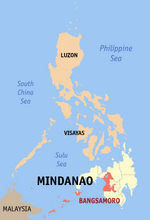
Maguindanao is a province in the Philippines located in the Bangsamoro Autonomous Region in Muslim Mindanao (BARMM). Since 2014 the provincial capital is Buluan but the legislative branch of the provincial government, the Sangguniang Panlalawigan, convenes in the old provincial capitol in the town of Sultan Kudarat. It borders Lanao del Sur to the north, Cotabato to the east, Sultan Kudarat to the south, and the Illana Bay to the west.

Cotabato City, officially known as the City of Cotabato, is a 3rd class independent component city in the Bangsamoro Autonomous Region in Muslim Mindanao, Philippines. According to the 2020 census, it has a population of 325,079 people, making it as the most populated city under the independent component city status.

Ampatuan, officially the Municipality of Ampatuan, is a 4th class municipality in the province of Maguindanao, Philippines. According to the 2020 census, it has a population of 28,941 people.

Buldon, officially the Municipality of Buldon, is a 4th class municipality in the province of Maguindanao, Philippines. According to the 2020 census, it has a population of 39,684 people.

Buluan, officially the Municipality of Buluan, is a 4th class municipality and executive capital of the province of Maguindanao, Philippines. According to the 2020 census, it has a population of 57,406 people.

Datu Odin Sinsuat, officially the Municipality of Datu Odin Sinsuat, is a 2nd class municipality in the province of Maguindanao, Philippines. According to the 2020 census, it has a population of 116,768 people.

Datu Paglas, officially the Municipality of Datu Paglas, is a 4th class municipality in the province of Maguindanao, Philippines. According to the 2020 census, it has a population of 33,682 people.
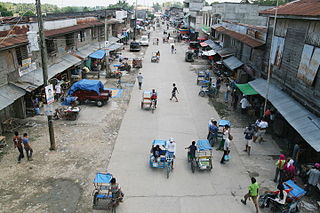
Datu Piang, officially the Municipality of Datu Piang, is a 2nd class municipality in the province of Maguindanao, Philippines. According to the 2020 census, it has a population of 28,380 people.

Shariff Aguak, officially the Municipality of Shariff Aguak, is a 3rd class municipality in the province of Maguindanao, Philippines. According to the 2020 census, it has a population of 33,982 people.

Parang, officially the Municipality of Parang, is a 1st class municipality in the province of Maguindanao, Philippines. According to the 2020 census, it has a population of 102,914 people.

Upi, officially the Municipality of Upi, is a 1st class municipality in the province of Maguindanao, Philippines. According to the 2020 census, it has a population of 59,004 people.
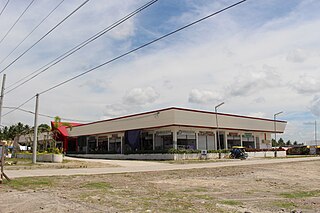
Pagalungan, officially the Municipality of Pagalungan, is a 1st class municipality in the province of Maguindanao, Bangsamoro, Philippines. According to the 2020 census, it has a population of 46,277 people.

Datu Saudi Ampatuan, officially the Municipality of Datu Saudi Ampatuan, is a 4th class municipality in the province of Maguindanao, Philippines. According to the 2020 census, it has a population of 31,060 people.

Datu Unsay, officially the Municipality of Datu Unsay, is a 5th class municipality in the province of Maguindanao, Philippines. According to the 2020 census, it has a population of 12,890 people.

Sultan Mastura, officially the Municipality of Sultan Mastura, is a 5th class municipality in the province of Maguindanao, Philippines. According to the 2020 census, it has a population of 25,331 people.
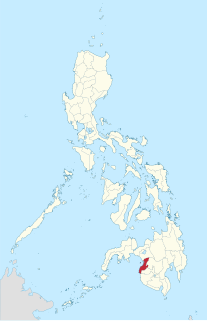
Shariff Kabunsuan was a short-lived province of the Philippines within the Autonomous Region in Muslim Mindanao (ARMM) that existed from 2006 to 2008. Its designated seat of government was Datu Odin Sinsuat. Initially comprising ten municipalities carved out of Maguindanao, Shariff Kabunsuan was created by virtue of Muslim Mindanao Autonomy Act No. 201; this law was nullified by the Supreme Court of the Philippines in 2008, thus disestablishing the province.
The Shariff Kabunsuan creation plebiscite was a plebiscite on the creation of the Province of Shariff Kabunsuan in the Philippines. The plebiscite was conducted on October 28, 2006 and results were announced on October 31, 2006.

Datu Blah T. Sinsuat, officially the Municipality of Datu Blah T. Sinsuat, is a municipality in the province of Maguindanao, Philippines. According to the 2020 census, it has a population of 28,243 people.

Shariff Saydona Mustapha, officially the Municipality of Shariff Saydona Mustapha, is a municipality in the province of Maguindanao, Philippines. According to the 2020 census, it has a population of 25,080 people.
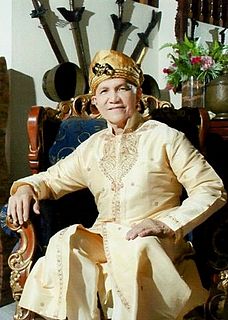
Datu Tucao Ong Mastura is a Filipino politician. He is the younger brother of the lawyer, historian, professor and former Maguindanao First District and Cotabato City Congressman Datu Michael Mastura, and an older brother of Mayor Datu Armando Mastura of Sultan Mastura, Maguindanao.























